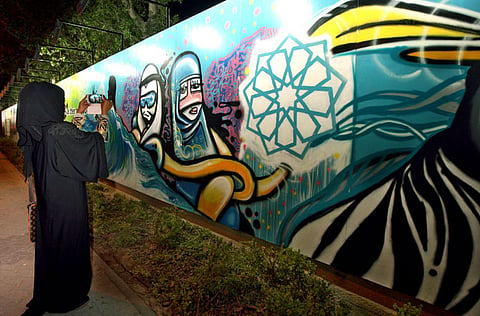Expo 2020 ‘will raise Dubai’s GDP growth, spending and debt’
Most planned spending expected to be financed by additional borrowing

Dubai: Hosting the World Expo 2020 will add at least 1.5 percentage points per year to Dubai’s real gross domestic product (GDP) growth over 2014-2020, leading to annual growth of 5.5 per cent, according to Institute of International Finance (IIF) a Washington based association of 450 global banks and financial institutions.
“The official figure shows World Expo 2020-related spending of Dh88 billion ($24 billion) over 2014-2020. However, a significant portion of the spending on infrastructure projects would still have taken place as part of Dubai 2020 vision. Most of the planned spending is expected to be financed by additional borrowing, leading to further increase in the already high debt,” said Garbis Iradian, Deputy Director of Institute of International Finance.
The IIF’s projections show that Dubai’s debt will increase from $142 billion (Dh521 billion) in 2012 to $168.5 billion by 2020. The debt-to-GDP ratio, however, is expected to decline from 106 per cent of GDP in 2012 to 70 per cent by 2020, assuming annual real GDP growth of 5.5 per cent, and GDP deflator (CPI inflation) of 2 per cent. Although declining, a debt-to-GDP ratio of 70 per cent by 2020 is still considered to be very high.
The IIF expects some amount of Federal and Abu Dhabi government support to the Expo related expenditures. “This support could be in the form of extending a significant portion of the debt maturities falling due in 2014-2017. There is large bunching of maturities in the coming two years, including a $20 billion facility for the Government of Dubai maturing in 2014, and about $10 billion of debt maturing in 2015 related to Dubai World’s debt restructuring of 2011,” said Iradian.
Central bank limits
For additional funding, the IIF expects the Dubai government to tap global capital markets in the coming years as financing from local banks is constrained by the recent limits set by the Central Bank of the UAE on bank lending to state governments and government-related-entities (GREs).
Dubai’s sovereign CDS spreads have continued to narrow to around 200 basis points (bps) most recently, as compared to 225 bps at end-2012, and 445 bps at end-2011. Additionally the government could encourage private sector participation in some of the projects (including hotels), in the form of public private partnership and could raise resources through asset sales.
Bank of America Merrill Lynch estimates that given that Expo construction work would start in 2016, fiscal room to accommodate the additional spending without jeopardising debt dynamics could have sensibly increased by that time. “The Dubai government’s policy is to cover current expenditures with current revenues, and to borrow to cover capital spending. This suggests the incremental Expo-related investment needs will likely require further borrowing,” said Jean-Michel Saliba Mena Economist at Bank of America Merrill Lynch.
Sign up for the Daily Briefing
Get the latest news and updates straight to your inbox



